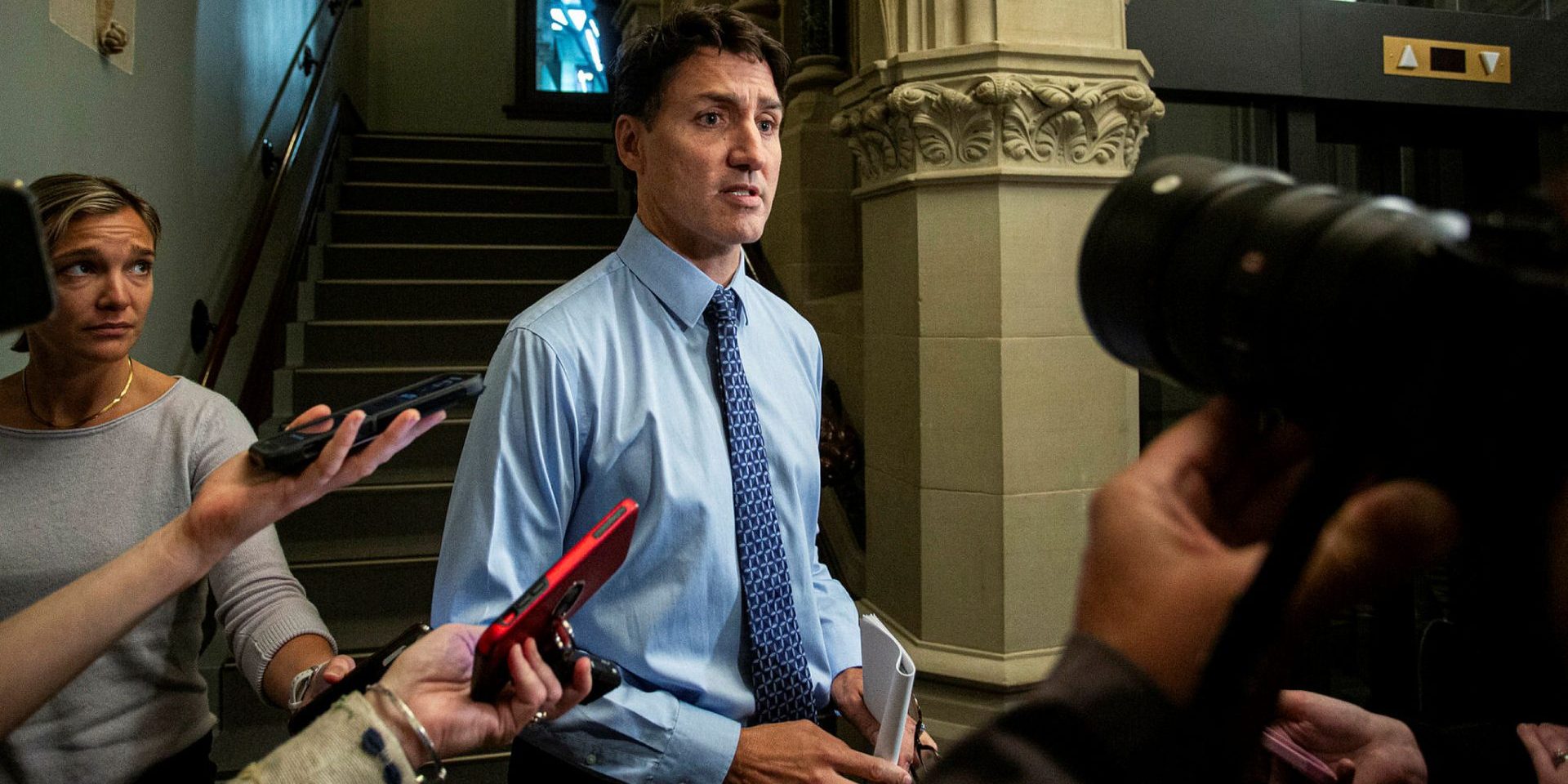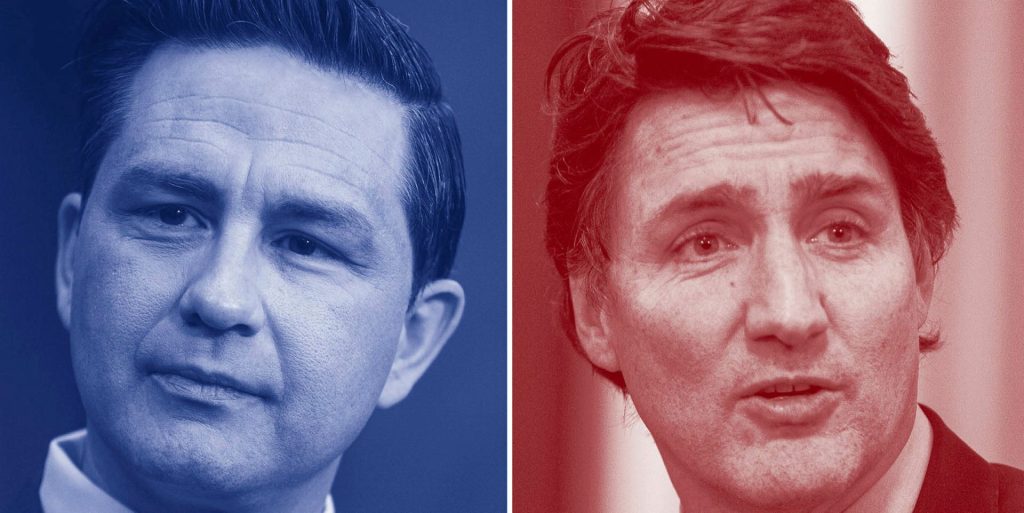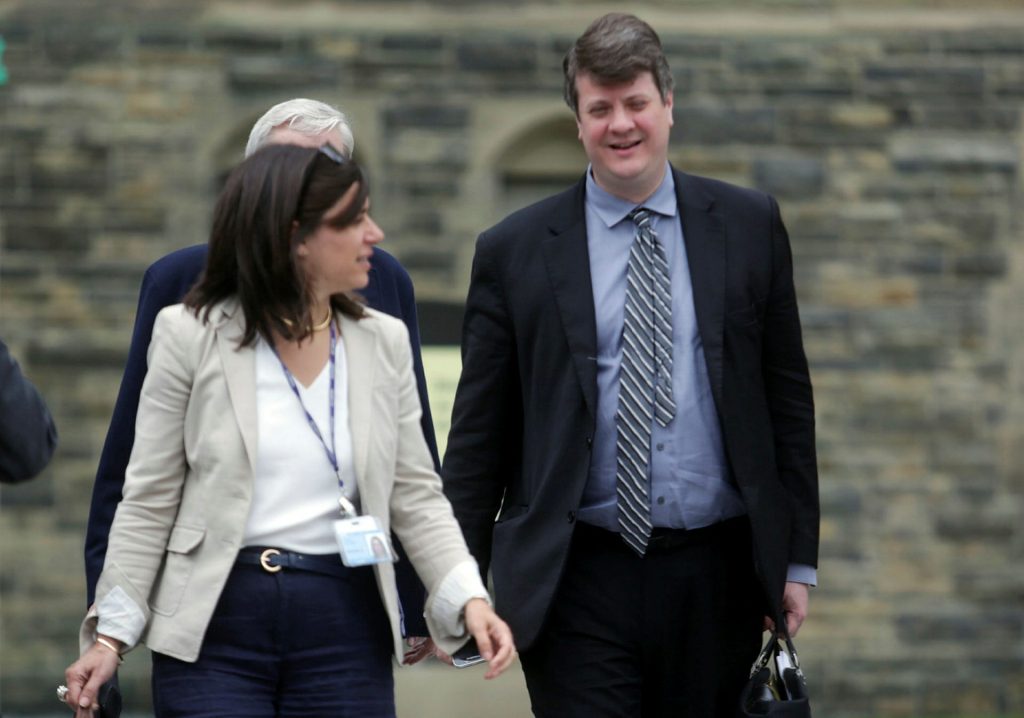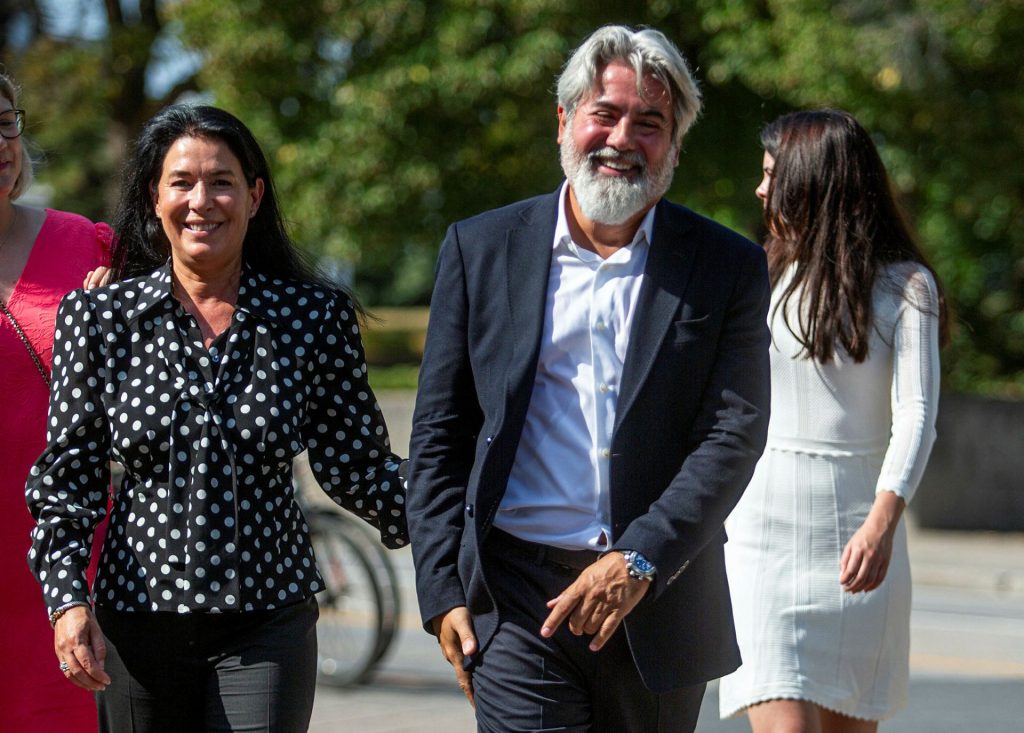Prorogation? Resignation? Liberals vow to push through House impasse as speculation swirls on the Hill

The Thanksgiving break week has granted the Liberal Party breathing room on a privilege motion that has ground House business to a standstill, but questions remain over what—if anything—the governing party can do to reverse static polling showing a catastrophic defeat at the next election.
Members of the government have sought to pour cold water on speculation that Parliament will be prorogued in order to avoid a successful non-confidence motion, especially since NDP Leader Jagmeet Singh (Burnaby South, B.C.) announced an end to his party’s supply-and-confidence agreement with the Liberals on Sept. 4.
In the past two weeks, ministers have been asked whether they would trigger the measure to break an impasse over a privilege motion concerning the release of all documents related to Sustainable Development Technology Canada to be turned over to the RCMP for a criminal investigation.
The motion takes precedence over most other House business, meaning that the government cannot debate or pass legislation. But the government has publicly refuted the idea of prorogation.
Asked during an Oct. 8 press conference whether the government is considering proroguing Parliament, Deputy Prime Minister Chrystia Freeland (University-Rosedale, Ont.) replied with a simple “no.”
As the impasse continues, so too does a relatively static polling trend showing the opposition Conservatives holding a double-digit lead over the Liberals. Whether prorogation or the resignation of Prime Minister Justin Trudeau (Papineau, Que.) would have an effect on those numbers is an area pollsters have been contemplating.
Meanwhile, The Toronto Star was the first to report on Oct. 11 about a possible revolt in the Liberal caucus, and growing calls among Liberal MPs for Prime Minister Trudeau to step down. CTV News, Global News, CBC News, The Globe and Mail, and most other media followed with their own stories. The Hill Times reported on Oct. 12 that as some in the Liberal caucus organize a call for the prime minister to step down, a number of former Liberal MPs, cabinet ministers, and prominent party members are also expected to ask Trudeau to step down in the coming weeks, Liberals sources told The Hill Times.
Nik Nanos, founder and chief data scientist at Nanos Research, who was interviewed earlier last week, said that under a prorogation and resignation situation, the Liberals “don’t have to be accountable in the House and make political deals just to stay in power.” Instead, it would enable the party to “control the narrative” by sliding from a leadership contest straight into a general election, and attract more donations from supporters eager for a new face at the top of the Liberals’ electoral ticket.
“It’s a possible path that doesn’t necessarily save the Liberals, but it puts them back in the game,” said Nanos.

Should Trudeau choose to stay in the next election campaign, the Liberals could face “a massive defeat” at the ballot box where they could be left with a similar post-Pierre Trudeau scenario with 40 Commons seat under John Turner’s leadership, as was the case when Brian Mulroney’s Progressive Conservatives won the largest majority in Canadian history—with 211 seats—following the 1984 federal election, said Nanos.
However, the pollster said that even if the Liberals went into the next vote with an interim leader such as Freeland, the party could experience a bounce in the polls without Trudeau at the helm.
The results of the latest Nanos poll, involving 1,009 Canadians and released on Oct. 8, found the Conservatives maintaining a strong lead at 40.3 per cent, with the Liberals and New Democrats almost tied at 21.8 per cent and 21.3 per cent, respectively. The Nanos Party Power Index, which is based on respondents’ voting intentions and impressions of party leadership, placed the Conservatives first at 53.4 points, followed by the NDP at 44.0 points, and Liberals at 40.2 points.
Nanos said that by moving quickly from a leadership race to a general election, the Liberals could force the opposition—particularly the Conservatives—to scramble in replacing any Liberal attack ads specifically targeting Trudeau, and leave little time for the NDP to create distance from the Liberals, he said.

Last month, Jeremy Broadhurst resigned as the federal Liberals’ national campaign director, a day after Singh announced an end to his party’s supply-and-confidence agreement with the Grits.
On Oct. 13, the Liberals named Andrew Bevan as their new national campaign director the next federal election.
Also in September and following the departure of Pablo Rodriguez (Honoré-Mercier, Que.) from both cabinet and the Liberal caucus, Anita Anand (Oakville, Ont.) was handed his ministerial portfolio in transport along with maintaining her duties as president of the Treasury Board. For Nanos, that move could signal Trudeau giving Anand a boost toward running to become his successor.
And then there’s Mark Carney’s appointment as the federal Liberal Party’s chair of a leader’s task force on economic growth in early September.

Former Liberal cabinet minister Pablo Rodriguez, centre, with his wife Roxane Hardy, left, and daughter Béatrice, pictured in Gatineau, Que., on Sept. 19, 2024, after Rodriguez announced his departure from cabinet and from the Liberal caucus. The Hill Times photograph by Andrew Meade
In Nanos’ view, should Carney run for the leadership, the former governor of the Bank of Canada and Bank of England could expect to be labelled by the Conservatives as “an elite” and “entitled,” as Trudeau has been. “The best way for Mark Carney to manage that is through his personal behaviour and tone,” said Nanos.
However, Nanos said he believes the race to replace Trudeau could also attract his fellow cabinet colleagues from Quebec where the Liberals have the best chance of winning seats in the next election.
“There’s no path to redemption for the Liberals unless they hold onto Quebec,” said Nanos.
In a 338Canada projection from Oct. 6, 21 out of 78 federal ridings in Quebec are considered safe seats for the Grits. However, the Bloc Québécois would still receive more seats with 42. Nationally, the Liberals would only win 53 ridings, with none in Alberta, Saskatchewan, Prince Edward Island, or Newfoundland and Labrador.
Based on those projections, the Grits would form the official opposition in the new 343-seat House of Commons, while the Conservatives would form a majority government with 228 seats.
Nanos said he believes a francophone leader would better resonate with Quebec voters. Therefore, he would expect Innovation Minister François-Philippe Champagne (Saint-Maurice—Champlain, Que.) and Public Safety Minister Dominic LeBlanc (Beauséjour, N.B.) to become Liberal leadership candidates.
Added Nanos: “The next election campaign will be based on a time for change. The Liberals will at least, by having a new leader, [could] say that something has changed for them.”
The “significant and substantial change” required for the Liberals is for the prime minister to step down, according to Darrell Bricker, CEO of Ipsos Global Public Affairs. He said that without that “there’s nothing in any of the data that exists today to suggest that they’re going to do anything that’s going to turn this situation around.”
Bricker said that when Trudeau became leader of the federal Liberals in 2013, the party “pushed aside the vestiges of whatever the Liberal Party was and made it the party of Justin Trudeau.”
“The party was on its last legs before Trudeau became leader and he resuscitated the Liberals. The way he did that was through his personality and his profile. But if that becomes fractured or becomes a negative, there’s nothing left,” said Bricker, who added that the opposition parties would rather face Trudeau in an election campaign than a new Liberal leader as “Canadians want somebody different in power.”
In an online survey involving 2,078 Canadians and conducted by Innovative Research Group last month, the only “leader attribute” for Trudeau scoring highest among his party counterparts was dishonesty, at 40 per cent. Conservative Leader Pierre Poilievre (Carleton, Ont.) topped the list in seven other categories, including “strong leadership” (34 per cent), “represents positive change” (33 per cent), and “stands for what I believe” (30 per cent).
The Tories led in 15 out of 17 issues categories, including border control, jobs, and the economy, government spending, health care, and gun violence. With gender equality, the Grits took the lead at 24 per cent, and with the environment, the Green Party topped the list at 26 per cent.
Innovative Research’s September survey had the Conservatives leading nationally at 39 per cent, followed by the Liberals at 27 per cent, and NDP at 18 per cent.
The national opinion-research firm also asked respondents questions about values, such as whether governments should base decisions on “ability to afford” or on “public need,” and created “value clusters” based on the responses.
Conservatives were divided into “populist” and “deferential,” representing a total of 24 per cent. However, “left” and “business” Liberals surpassed that at 37 per cent. Innovative Research president Greg Lyle said the party has traditionally been able to tap into the “pay-as-you-go moderates” category, which represented 21 per cent of respondents, and is a group now supporting the federal Conservatives. The “core left” category, which leans NDP, rounded out the responses at 19 per cent.
“The largest group of people in Canada are natural supporters of the Liberal Party,” said Lyle, who added that “it’s way too late for Trudeau” to consolidate that voting base. “He’s done; he has to go.”
Whoever follows needs to have the “common touch,” said Lyle.
Lyle said that requirement could disqualify Carney, “who has a reputation for jetting off to Davos and hanging out with the rich and beautiful.” But it could provide an opportunity for someone within the cabinet, such as Environment Minister Steven Guilbeault (Laurier—Sainte-Marie, Que.), who has considered running for the leadership and who, in Lyle’s opinion, could serve as “a change agent,” but would have to introduce “a new, left-populist vision for climate action that doesn’t involve a carbon tax.”
“No matter what, the Liberals have to be seen as change,” he said.
That would enable the party to become “a bigger force” in an election campaign, “and start to roll back the Tory gain”—potentially to reduce the Conservatives to a minority government—“a long, long reach right now and a very steep climb,” said Lyle.
“The problem is that Trudeau has dragged the Liberal Party’s reputation down with him,” said Lyle.
In Nanos’ view, “the only way Conservatives go into minority territory is if Pierre Poilievre makes a mistake.”
In Bricker’s view, the only way the Liberals can be viable in the next national vote is by changing their leader, particularly when the Grits are trailing the Conservatives by 20 per cent.
“The Conservatives can give them 10 points, and still win a majority,” said Bricker.
He somewhat agrees with Nanos’ scenario on how events will unfold in the coming weeks.
Bricker believes that Trudeau will prorogue the House and resign, and his successor will return to Parliament with a Speech from the Throne and a federal budget—both of which will trigger confidence votes that the Liberal minority government would lose, sparking a general election by spring at the latest.
“The only question for me,” said Bricker, “is whether there is any resilience in the Liberal brand—regardless of who the leader is—such as on the West Island of Montreal, or downtown Toronto?”
The Hill Times





 LICENSING
LICENSING PODCAST
PODCAST ALERTS
ALERTS













